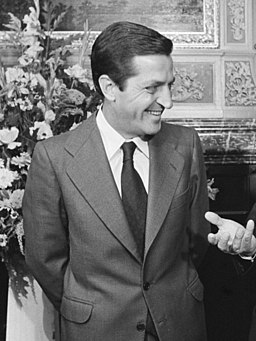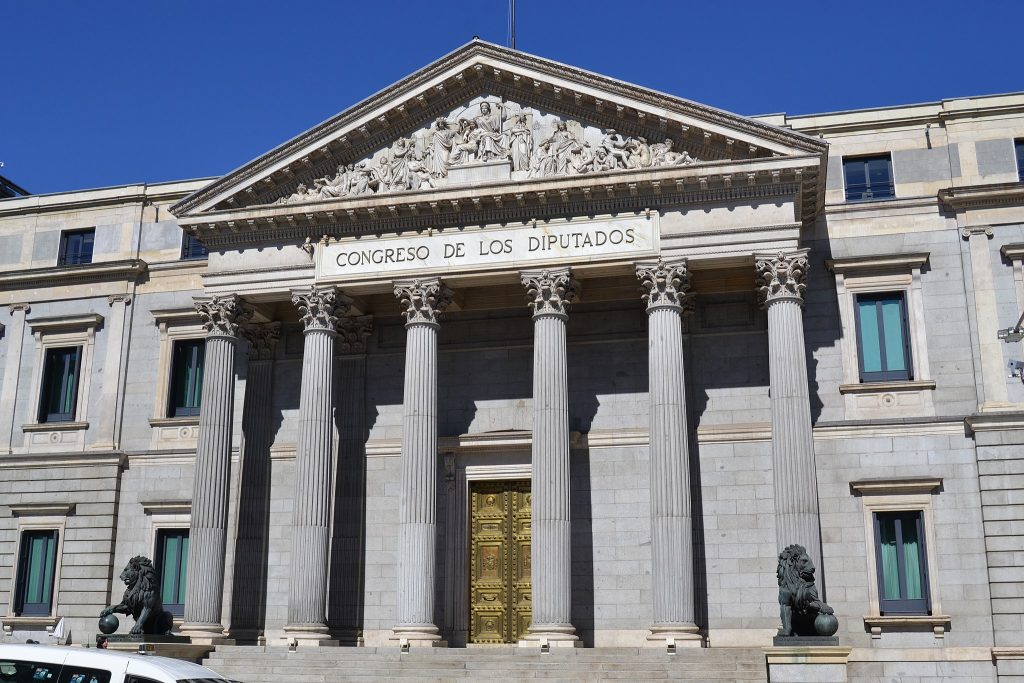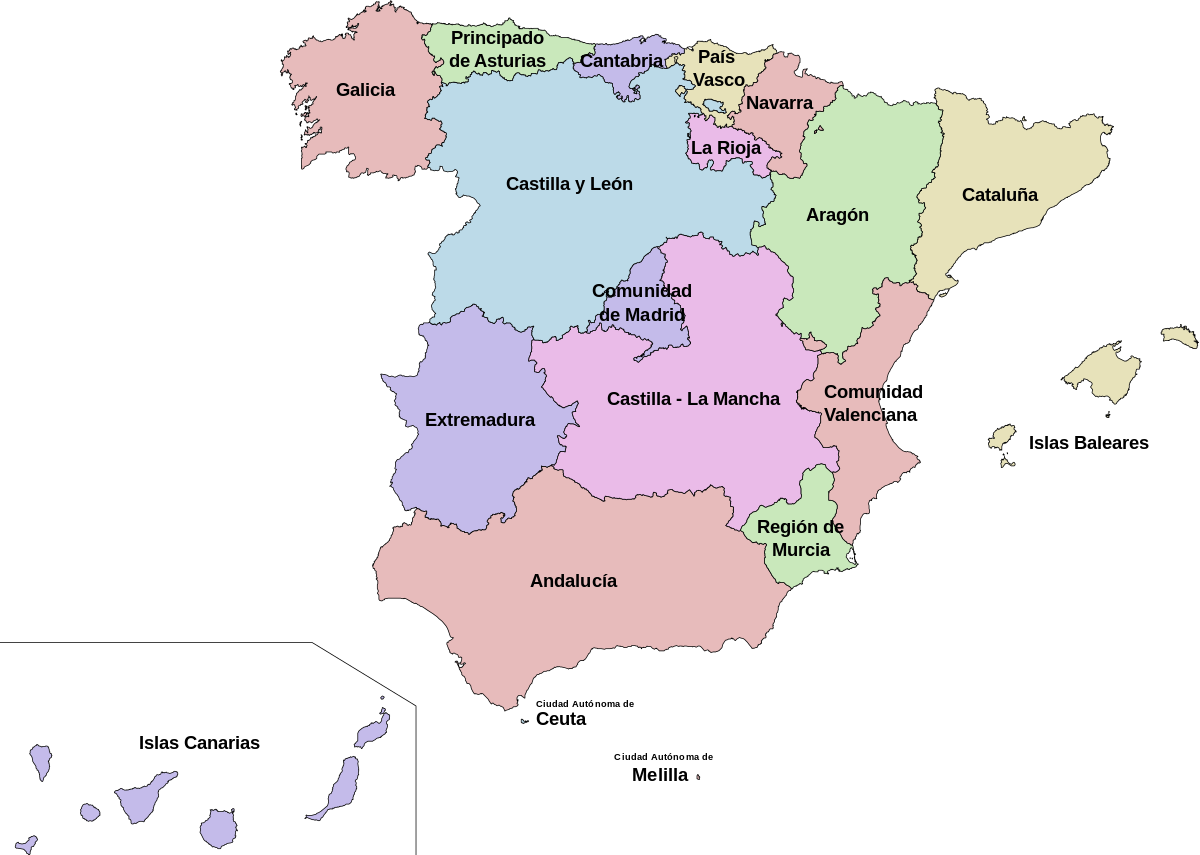5
Once Franco died and Juan Carlos I was crowned, the government had to decide which way to go. There were two main positions within the regime: the ‘bunker’ group or continuistas, opposed to any change, and the reformistas, including the King himself, who supported a change towards democratization. The pressure to move towards the second option were overpowering. Spanish society would not have tolerated a continuation of the regime and the international community was putting pressure on Spain to change. Things had to be done quickly and compromises were unavoidable. Since the regime had to be dismantled from within, Francoist politicians had to make sure that they were not going to be made accountable for political crimes committed during the war and the dictatorship. It was seen as necessary to start with a blank slate. This is known as the Pacto del olvido (the Pact of forgetfulness), a sort of consensual historical amnesia that allowed the country to look to the future.
Thus, the Transition started. In 1976 all political parties were legalised. The provisional PM, Adolfo Suárez, had to deploy all sorts of assurances to the Army to legalise the Communist Party, but it finally happened.
In 1977 the Ley de Amnistía was passed, allowing amnesty to all political prisoners and, also, immunity for crimes committed by the dictatorship.
The first democratic election since 1936 took place in 1977. Adolfo Suárez and his conservative party won.

First democratically elected Prime Minister (Presidente) after the dictatorship
CULTURAL RESOURCES
Jarcha (band): Libertad sin ira (iconic political song in the Transition)
Vino tinto (band): Habla, pueblo, habla (iconic political song in the Transition)

The first task of the new government was to draft a constitution that would guarantee the rule of law. It was ratified in referendum on December 6th in 1978. This date has become a national holiday. This constitution needed to deal with the matter of the different ‘historical region’ within the Spanish state (Basque Country, Catalonia and Galicia). All these three regions had not only their own language, but also aspirations for some form of self-rule that the Republican government had already recognized in the 1930s. Therefore, the Constitution made a provision for some devolution of power to these regions. It left the door open for the rest of the regions to request devolution as well. In a short period of time they all did. Spain was reconfigured in 17 comunidades autónomas (autonomous communities/regions) and two ciudades autónomas (autonomous cities), and became the Estado de las Autonomías. However, the constitution is very clear about the indivisibility of the country and appoints the Army as the guardian of its unity.

CULTURAL RESOURCES
Spain is not a federation: Autonomous Communities of Spain explained
5.1 SOCIAL AND CULTURAL CHANGES IN THE 80s
After decades of restrictions of all types, there was a surge of freedom in social mores and culture. Censorship disappeared and new newspapers and magazines appeared in the shops. In 1976 El País, the most-widely read Spanish daily to this day, was published for the first time. One of the signs of the more liberal new times was the constant display of nude female bodies in magazines and films. For this reason, this era was known as ‘el destape’ (the ‘uncovering’).
The Church lost its prominent role. Civil marriages were allowed. In 1981 a divorce act was implemented, although it was quite restricted. Married couples who wished to file for divorce had to cite grounds and stay legally separated for a year before they could do so. As a rule, divorce procedures were long and expensive and a new concept caught on, divorcio a la española (divorce Spanish-style), which simply meant that couples remained legally separated and did not divorce.
When referring to cultural life during the Transition, the movida madrileña (the Madrid Groove) was probably the most important popular cultural movement affecting young people’s tastes and aesthetics. The atmosphere of freedom was particularly visible in the streets of big cities, above all, Madrid. Certain bars and night-clubs in Madrid were patronised by groups of artists, musicians and ‘night owls’ who indulged in all sorts of excesses involving alcohol and drugs. But this energy also unleashed a wave of creativity and gave rise to new trends in music, cinema, literature and fashion. The now internationally well-established film director Pedro Almodóvar was part of this scene. The then popular Mayor of Madrid, Enrique Tierno Galván, a veteran Socialist and university professor in his 60s, was considered the ‘coolest’ citizen of this vibrant city. In one of his speeches to the people of Madrid in the festive atmosphere of a rock concert, he said using very informal language: “Rockeros, el que no esté ‘colocao’ que se coloque, y al loro” (Rock fans, who isn’t stoned, get stoned, and keep ‘ya’ eyes peeled).
Smoking cannabis became acceptable, even cool. Unfortunately, there was a darker side to drug consumption in the 80s. Heroine ravaged a generation of youngsters in Spain who died of overdose or AIDS, a then fatal condition which became known for the first time in the 80s and which could be transmitted not only through sexual contact, but also by blood transfusions and, in the case of heroin addicts, by sharing needles.
CULTURAL RESOURCES
Watch Madrid Mayor’s historic speech inserted in the popular TV series Cuéntame cómo pasó:
Postmodernism in Almodóvar’s films
ALMODÓVAR’S FILMS AVAILABLE FROM THE LIBRARY (from the 1980s to the 2000s)
La ley del deseo (1987) Melodrama about a complex love triangle between two men and a trans woman (Certificate: 18)
Mujeres al borde de un ataque de nervios (1988) Black comedy-drama about a woman who has been abandoned by her lover and, in the process of finding out why, she encounters a series of very eccentric characters.
La flor de mi secreto (1995) Comedy-melodrama about a female writer of romance novels.
Carne trémula (1997) Erotic romantic drama film (Certificate: 18)
Hable con ella (2002) Drama about a male nurse infatuated with a female dancer lying in a coma in hospital.
La mala educación (2004) Drama about two reunited childhood friends who were together in a Catholic boarding school.
5.2 THREATS TO THE TRANSITION
The Spanish Transition was a period of uncertainty and restlessness. Spain was going through an economic crisis brought about by the international petrol crisis. Workers went on strike and staged demonstrations regularly, and regularly they encountered police brutality. There were frequent deadly attacks carried out both by far-right groups, who did not want any change, and extreme-left groups, including ETA, who wanted more changes. ETA had made clear that they did not trust the new democracy because power was still in the hands of Francoists. At the time their targets were members of the police and military, often high commanding officers. All in all, nearly 600 people are estimated to have died violently at this time, nearly 200 of them at the hands of the police.
It was clear that the military were losing their patience. Constant ETA attacks, a society in turmoil and different regions of Spain demanding more self-government was not what they were used to after the tight authoritarian regime they had defended before. Several plots for a coup were discovered and their masterminds treated with leniency. Finally, on February 23rd 1981 a military coup materialised. It was organized by a group of army generals and staged by a group of guardias civiles (Civil Guards, military police force) led by Lieutenant Coronel Antonio Tejero. They stormed the Parliament gathered in an important plenary session which was being televised. They held MPs hostage, waiting for other units to take control of strategic locations and for more generals all over the country to join the rebellion. After hours of intense tension, it did not look as if the coup was progressing. Just after one in the morning, the king, in his role as Commander-in-Chief, appeared on TV and ordered the troops back to their barracks. The following morning, the guardias civiles, abandoned the Parliament building and surrendered.
CULTURALL RESOURCES
The failed coup, known formally as 23-F and informally as ‘tejerazo’, made democracy stronger. Spain was ready to face the future. However, many crucial details of the plot are still unclear, because key official documents are still classified. Amongst many other things, we do not know exactly what the coup leaders’ plans were once they took power.
A year later the PSOE, a Socialist party, won the general election in a landslide. This event opened a new page in the history of the country.
CULTURAL RESOURCES
FILM
La isla mínima (Marshland, 2014) (available from the library) Thriller set in the 1980s.
Cuando Franco murió en noviembre de 1975, nadie sabía qué iba a pasar. El gobierno estaba dividido entre el ‘búnker’, también llamados ‘continuistas’, que querían continuar con el mismo régimen, y los ‘reformistas’, incluido el rey, que veían necesario un cambio hacia la democracia, aunque respetando el orden vigente. Las presiones tanto internas como internacionales inclinaron la balanza hacia un cambio consensuado. De esta manera se alcanzó un acuerdo que se conoce como el ‘Pacto del olvido’. Consistía en empezar de cero, dejando atrás cuestiones pendientes desde la guerra civil.
Se legalizaron todos los partidos políticos, incluido el PCE (Partido Comunista de España) con la objeción de la Fuerzas Armadas en este último caso. En 1977 se aprobó la Ley de Amnistía, por la cual salieron de la cárcel todos los presos políticos. Esta ley aseguraba la inmunidad a los franquistas para que nunca fueran juzgados por crímenes políticos del pasado.
También en 1977 tuvieron lugar las primeras elecciones democráticas desde la República. Ganó un partido conservador de centro liderado por Adolfo Suárez, quien se convirtió en el presidente de España.
En 1978 se aprobó una constitución que aseguraba los derechos y libertades de los españoles. Uno de los aspectos más novedosos de esta constitución es que abría el camino para el autogobierno o autonomía de las ‘nacionalidades históricas’ (Cataluña, País Vasco y Galicia). También daba a las otras regiones la posibilidad de acceder a la autonomía si así lo deseaban. Al final del proceso todas las regiones se convirtieron en comunidades autónomas. Sin embargo, la Constitución declara la unidad indisoluble de España y establece que el ejército es el guardián de esta unidad.
CAMBIOS SOCIALES Y CULTURALES
La censura fue desapareciendo y se empezaron a publicar revistas y periódicos nuevos. El País, el periódico nacional más vendido, se publicó por primera vez en 1976. Esta es la época en que aparecen fotografías y películas con mujeres desnudas, por lo que se la conoce como ‘el destape’.
En 1981 se aprobó la Ley del divorcio. Era una ley bastante restrictiva. Los esposos tenían que estar separados legalmente durante un año antes de poder empezar los trámites legales para divorciarse. El proceso era largo y costoso, y muchos decidieron quedarse separados legalmente, pero sin divorciarse. Se conoce como ‘divorcio a la española’.
Una de las expresiones culturales más características de esta época es la ‘movida madrileña’. Fue un movimiento cultural formado por artistas que frecuentaban ciertos bares de Madrid y que intercambiaban ideas y proyectos, aparte de beber y tomar drogas hasta altas horas de la madrugada. Este movimiento abrió nuevas formas de expresión en música, cine, literatura, comics, moda, etc.
El consumo de drogas tuvo su lado oscuro en la heroína que entraba en España. Muchos jóvenes de la época murieron a causa de sobredosis de esta droga o de sida, una enfermedad que apareció en esta época y que se transmitía a través de las relaciones sexuales, transfusiones sanguíneas y, en el caso de los heroinómanos, al compartir jeringuillas.
EL PRECIO HUMANO DE LA TRANSICIÓN
La Transición fue un periodo lleno de incertidumbre y de violencia en las calles. Las huelgas y manifestaciones de obreros y estudiantes eran constantes. Pedían mejores condiciones laborales y educativas y más libertades. La policía reprimía con brutalidad estas manifestaciones.
Los ataques terroristas, tanto de ultraderecha como de extrema izquierda, eran frecuentes. En ese periodo se calcula que casi 600 personas perdieron la vida debido a la violencia política, casi 200 de ellos a manos de la policía.
AMENAZAS CONTRA LA TRANSICIÓN
En este clima de inestabilidad los temores de un golpe de estado por parte del ejército eran una realidad. La organización separatista vasca ETA asesinó a varios militares en esta época, ya que los consideraba franquistas. Los generales del ejército estaban descontentos debido a estos ataques y a la cuestión de las comunidades autónomas, que ellos veían como una amenaza a la unidad de España.
El 23 de febrero de 1981 esta amenaza se hizo realidad. El teniente coronel Antonio Tejero y un grupo de guardias civiles entraron en la sesión plenaria del Congreso. El golpe había sido organizado por dos generales y varios capitanes, que creían que una vez tomado el Congreso, otros generales se unirían al golpe en todo el Estado. Se vivieron momentos tensos, pero durante la noche el rey habló por televisión y ordenó la retirada de las tropas. Los golpistas se rendieron.
Este golpe de estado fallido hizo a la democracia más fuerte. Al año siguiente el PSOE (Partido Socialista Obrero Español) ganó las elecciones por mayoría absoluta.
Media Attributions
- 2048px-Congreso_de_los_Diputados_(25251642643)
